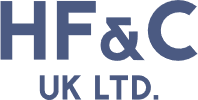Driving Automotive Excellence:
A Chief Procurement Officers Transformation Journey
Introduction
Effective procurement practices are essential for driving operational excellence and achieving sustainable growth, especially within the Automotive Sector. This case study highlights the business transformation program our CEO (Aurelien Faucheux) undertook, when working as the Chief Procurement Officer (CPO) at a UK OEM. By leveraging strategic supplier negotiations, optimizing supply chain management, and implementing efficiency-driven initiatives, the Procurement team successfully reduced total bill of material costs, enhanced operational efficiency, streamlined management reporting, and increased production capabilities.
As the automotive industry faced evolving market demands and competitive pressures, the need for strategic procurement leadership became increasingly apparent. The CPO recognised the opportunity to drive significant value through procurement optimisation, supply chain efficiency improvements, and enhanced supplier relationships. With a vision to transform the company's procurement function into a strategic asset as part of a wider company turnaround, the department undertook a transformative journey aimed at delivering tangible business outcomes.
Background
The transformation initiative encountered various challenges inherent to the automotive industry:
Cost Pressures
The company faced relentless cost pressures stemming from raw material price fluctuations, labour costs, and operational inefficiencies, necessitating cost reduction strategies without compromising quality or performance.
Complexity in Supply Chain
A global supply chain with multiple tiers of suppliers and intricate logistics routes needed to be managed to ensure timely delivery and quality consistency, which posed a significant challenge.
Data Fragmentation
Inadequate data visibility and disparate systems hindered effective decision-making and performance monitoring, highlighting the need for streamlined management reporting processes.
Challenges
Strategies and Implementation
The CPO employed a number of tactics and operational activities to address the company's challenges and drive transformation:
1. Strategic Supplier Negotiations
Leveraging their expertise in supplier relationship management and negotiation, the CPO initiated collaborative discussions with key suppliers to secure favourable terms, optimize pricing structures, and drive cost savings throughout the supply chain. Supplier Performance scorecards were created and issued, along with the creation of an awards programme, to recognise outstanding results.
2. Supply Chain Optimisation
Through rigorous analysis and process improvements, the procurement team optimised the company's supply chain, reducing lead times, minimising inventory levels, and enhancing overall operational efficiency. This included a review of minimum order quantities, consolidating routes, and working with the Supply Chain team to ensure that production was not impacted.
3. Performance Metrics and Reporting
The Business Office team was launched to implement robust performance metrics and reporting mechanisms across the department. Under the guidance of the CPO, the team quickly established clear visibility into procurement KPIs, enabling data-driven decision-making and facilitating proactive management interventions.
4. Continuous Improvement Culture
Fostering a culture of continuous improvement and focus on value add activities, the CPO encouraged cross-functional collaboration and innovation, empowering employees to identify and implement efficiency-enhancing initiatives across the organisation. An administrative back office was scoped and created to reduce the administrative burden on the procurement teams, allowing the buyers to focus on developing strategic improvement plans.
The strategic initiatives led by the CPO yielded significant results and tangible business outcomes:
1. Cost Reduction
Through strategic supplier negotiations and supply chain optimisation efforts, the company achieved substantial cost savings across various procurement categories, enhancing profitability and competitiveness.
2. Increased Efficiency
By introducing new processes and controls, combined with improved supplier relationships and enhanced supply chain visibility, the business experienced gains in operational efficiency, with reduced lead times, and improved resource utilisation rates.
3. Streamlined Management Reporting
The implementation of streamlined management reporting processes enabled timely access to procurement data, facilitating informed decision-making and strategic planning. Combined with regular communication sessions, the teams were kept informed on key topics and target progression, building a results-driven culture.
4. Enhanced Production Capabilities
By optimising supply chain operations and reducing bottlenecks, the company enhanced its production capabilities, enabling it to meet customer demand and capitalise on market opportunities.
Results and Achievements
Conclusion
The transformative journey led by the Aurelien Faucheux exemplifies the pivotal role of strategic procurement leadership in driving business success within the automotive industry. Through effective supplier negotiations, supply chain optimization, and efficiency-driven initiatives, the CPO not only reduced costs and increased efficiency but also streamlined management reporting and enhanced production capabilities. Their leadership and commitment to excellence have positioned the company for sustained growth and competitiveness in the ever-evolving automotive landscape.



